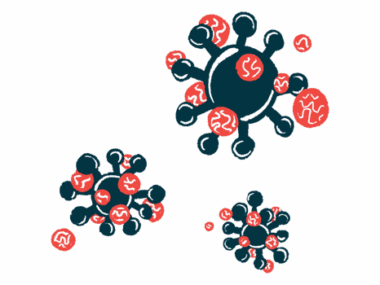New ABCB11 mutation linked to PFIC2, hypothyroidism in boy
Researchers say gene may play role in thyroid maturation
Written by |

A new ABCB11 gene mutation was the likely cause of progressive familial intrahepatic cholestasis type 2 (PFIC2) in a boy who was also born with hypothyroidism, or reduced function of the thyroid gland, according to a study from India.
The thyroid gland, located in the neck, is responsible for the production of hormones involved in the body’s metabolic rate, growth, and development.
While PFIC2 has been linked to extrahepatic manifestations, or problems outside the liver, the case likely represents the first of a PFIC2 patient with congenital hypothyroidism, the researchers said.
“We hypothesize that this gene might also play some role in the structural or functional maturation of the thyroid gland,” they wrote.
The case study, “A Novel Variant (p.Leu1054Arg) in ABCB11 Presenting with Progressive Familial Intrahepatic Cholestasis (PFIC) with Congenital Hypothyroidism,” was published in the form of a scientific letter in the Indian Journal of Pediatrics.
PFIC is a group of rare genetic liver disorders that occur when liver cells have problems producing or secreting bile, a digestive fluid. This results in intrahepatic cholestasis in which the flow of bile from the liver, where it is produced, to the intestines, where it helps digest fatty molecules, is slowed or stalled inside the liver. Impaired bile flow, or cholestasis, causes bile to accumulate in the liver, damaging the organ and affecting its function, resulting in symptoms including dark-colored urine, jaundice (yellowing of the skin and whites of the eyes), and itching (pruritus).
Gene mutations cause problems
In severe PFIC cases, liver damage and scarring can progress to liver failure, a stage where a liver transplant is the only therapeutic option.
PFIC type 2 is caused by mutations in the ABCB11 gene that result in low levels of bile salt export pump (BSEP), a protein that transports bile salts, a component of bile, out of liver cells. Without this protein, liver cells become overloaded with bile salts.
There have been prior reports of symptoms in PFIC2 patients that are unrelated to the liver, including bleeding, thickened skin, and hearing loss.
The researchers described the case of a boy who carried a new ABCB11 mutation that was the likely cause of his PFIC2 and congenital hypothyroidism. The boy’s parents were not blood related. His older sibling had died with liver inflammation, or hepatitis, of unknown cause at the age of 2.
The 1-month-old boy had showed jaundice and dark-colored urine beginning when he was 20 days old. On examination, researchers found he was underweight and had jaundice, but his liver and spleen were normal-sized. Further tests revealed cholestatic hepatitis with normal blood levels of gamma-glutamyl transferase (GGT), a marker of liver or bile duct disease that is usually found within the normal range in PFIC2. He also had signs of hypothyroidism.
Given that additional examinations found no other abnormalities, the boy was prescribed ursodeoxycholic acid (UDCA; sold under the brand names Urso and Actigall) to treat cholestasis, along with nutritional supplements. UCDA helps to make bile more soluble in water and move bile more easily out of the liver, ultimately helping to ease symptoms and prevent further liver damage.
He also started treatment with levothyroxine (sold as Synthroid and Levoxyl, among others) for hypothyroidism.
At 4 months, his thyroid-related blood profile had been normalized, but he still showed signs of cholestasis. At this point, clinicians suspected the boy might have PFIC, and his liver was biopsied. The liver biopsy showed signs of tissue scarring, liver cell malformations, and absence of the BSEP protein in his bile canaliculi, the thin tubes that collect bile from liver cells.
Genetic analysis revealed the boy had inherited a novel missense mutation, called c.3161T>G, in the ABCB11 gene from both of his parents, confirming a PFIC2 diagnosis. A missense mutation results in a change in one amino acid, or protein building block, in the protein’s sequence.
At last reported follow-up, at age 2.5, the boy was gaining weight and his itching was being managed with UDCA and rifampicin, an antibiotic sold as Rimactane and Rifadin, among others. He had been referred for a liver transplant.
“A similar presentation of PFIC with congenital hypothyroidism has been reported in PFIC-1 but none in PFIC-2/3,” the researchers wrote, adding that “in this case, a novel variant of ABCB11 has been observed with congenital hypothyroidism.”







